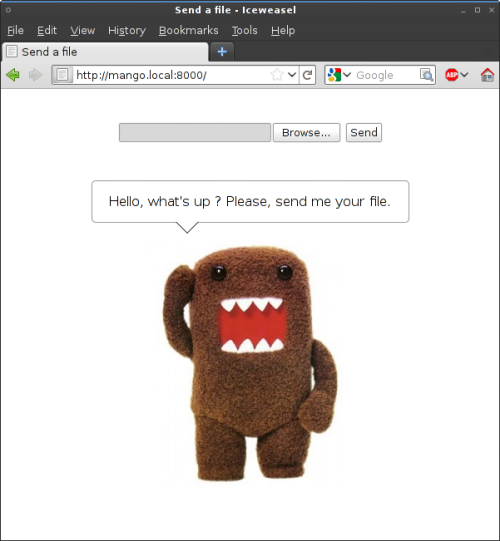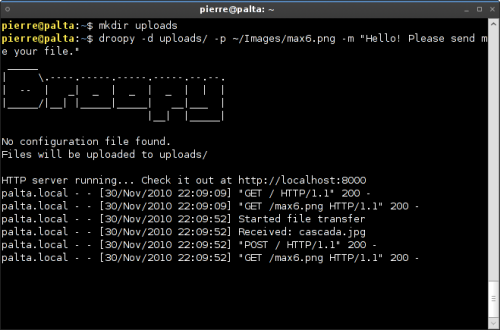Droopy
Easy File Sharing
Fork by Filippo Cremonese (fcremo). I added the --randomize-filenames option and a Dockerfile. Below, the original author Readme.md
Copyright 2008-2013 (c) Pierre Duquesne stackp@online.fr Licensed under the New BSD License. Originally shared at Pierre's Blog, stackp.online.fr.
About
Droopy is a standalone, minimal file-sharing server written in pure Python and designed for simplicity. Originally written to facilitate easy sharing on an ad-hoc basis, it has become central to systems such as Piratebox which extend the concept to offline, social filesharing.
Usage
Note: A tutorial on how to set up Droopy on Windows was very kindly written by Ronan. The rest of this section focuses on Linux and MacOSX.
Droopy is a command-line program. I’ll suppose you’ve downloaded and saved the file in ~/bin/.
Go to the directory where you want the uploaded files to be stored, for example:
mkdir ~/uploads
cd ~/uploads
Then, run droopy. You can give a message and a picture to display:
python3 ~/bin/droopy -m "Hi, it's me Bob. You can send me a file." -p ~/avatar.png
And it’s up and running on port 8000 of you computer. Check it out at http://localhost:8000,
and give your computer’s address to your friends.
Droopy supports a number of other options; try python3 droopy --help for insight.
On Linux, droopy can be run directly without specifically calling python3, so
you can put droopy into a folder that's in your system PATH variable, such as
/usr/bin/ and call it directly: droopy --help.
Feedback and contribution
I’d love to hear about your experience using droopy. If you have ideas to improve it, please let me know. Pierre – stackp@online.fr.

